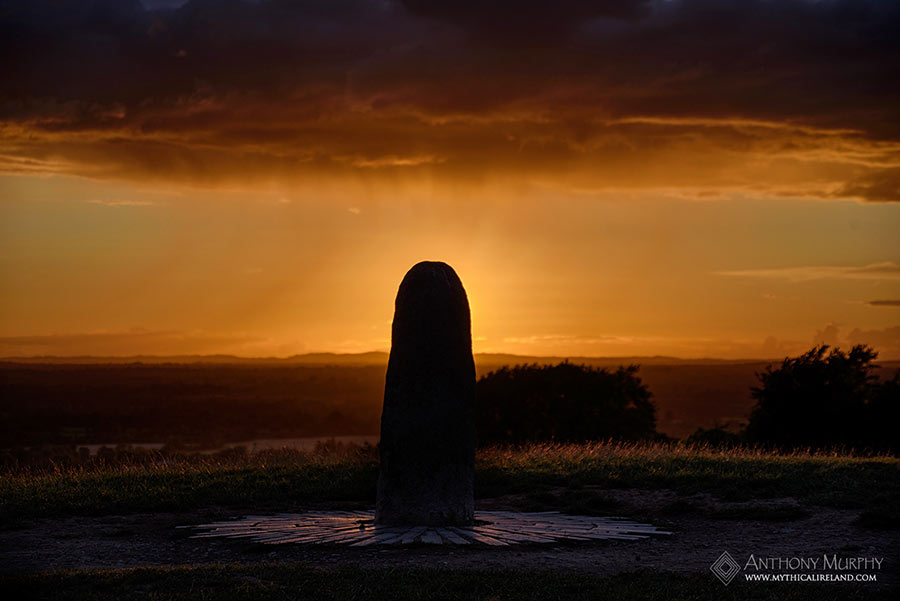
The Lia Fáil - Mystery Screeching Stone of Tara brought by The Tuatha Dé Danann
The Lia Fáil, known as the Stone of Destiny, sits atop An Forradh (The King's Seat) at the Hill of Tara, Co. Meath, pictured here at sunset. The stone, according to legend, will cry out when the rightful king of Ireland puts his foot against it. According to the Lebor Gabála, the Book of Invasions, Lia Fáil was one of four mysterious objects brought to Ireland by the Tuatha Dé Danann.
The Tuatha Dé Danann were said to have acquired all manner of knowledge of science, druidry, the arts, prophecy and magic in four mysterious cities in the northern islands of the world. These cities were called Failias, Goirias, Findias and Muirias.
From Failias was brought the Lia Fail, which is in Temair (Tara), and which used to utter a cry under every king that should take Ireland. From Goirias was brought the spear which Lug had: battle would never go against him who had it in his hand. From Findias was brought the sword of Nuadu: no man would escape from it; when it was drawn from its battle-scabbard, there was no resisting it. From Muirias was brought the cauldron of The Dagda; no company would go from it unsatisfied.
The coming of the Tuatha Dé Danann to Ireland with these enigmatic objects is a fantastic arrival, according to Lebor Gabála.
In this wise they came, without vessels or barks, in dark clouds over the air, by the might of druidry, and they landed on a mountain of Conmaicne Rein in Connacht.
Another version suggests that they arrived in a sea expedition, and that they burned their boats after arrival.
It was owing to the fog of smoke that rose from them as they were burning that others have said that they came in a fog of smoke.

This phallic-shaped pillar known as the Lia Fáil, located on top of the mound called An Forradh, the King's Seat, is allegedly the original stone, but there are several reasons to doubt this. In medieval literature, the stone is said to have been located to the north of Duma na nGiall, the Mound of the Hostages. The present stone is said to have been erected in the 1820s by locals in memory of those who died in the area during the 1798 rebellion. P.W. Joyce, writing in The Wonders of Ireland in 1911, said that he had spoken to a gentleman 50 years previously who had been involved in erecting the stone photographed above, and that it had NOT been brought, as Petrie had suggested, from near the Mound of the Hostages, but rather that it had been found in a trench at the bottom of the Forradh, where it had apparently been lying prostrate for generations.
But Joyce goes further, and this is very interesting:
"...the coronation stones used so generally by the Gaelic tribes all over Ireland and Scotland, were comparatively small and portable, like that now under the Coronation chair at Westminster which is a flag 25 inches by 15 inches by 9 inches thick. But the present pillar-stone at Tara is 12 feet long by nearly 2 feet in diameter. It would be very unsuitable for standing on during the ceremonies of installation and coronation;"

He concludes that "The present massive pillar-stone on the Forradh in Tara is not the Lia Fail." He furthermore states that: "The Lia Fail was never brought away from Ireland, but remains still in Tara, buried and hidden somewhere in the soil; probably in the position where the old writers place it, on the north side of the Mound of Hostages."
Perhaps some future archaeological probing, using remote sensing methods, or even a proper archaeological dig, will find the real Lia Fáil!
Read more about the Hill of Tara on this page.
